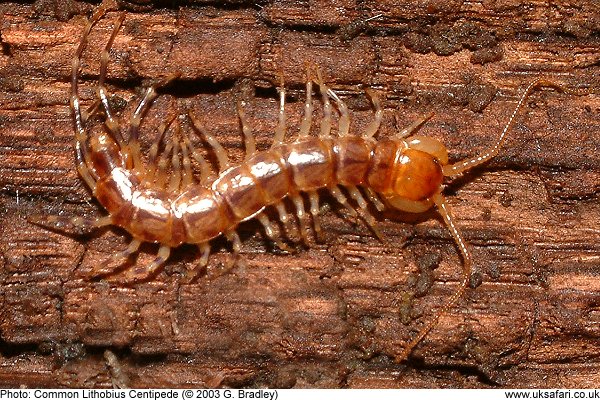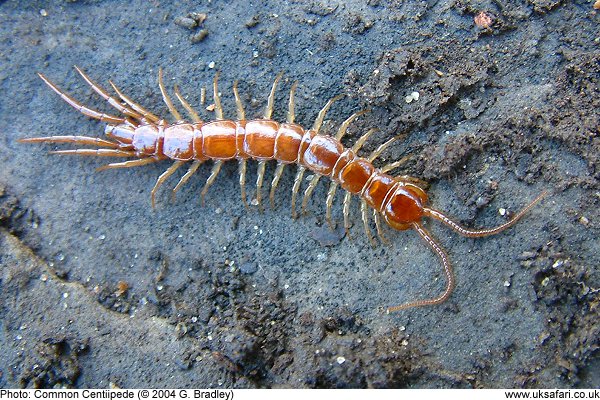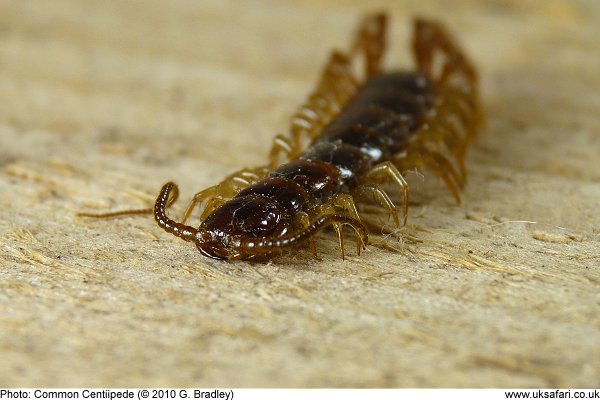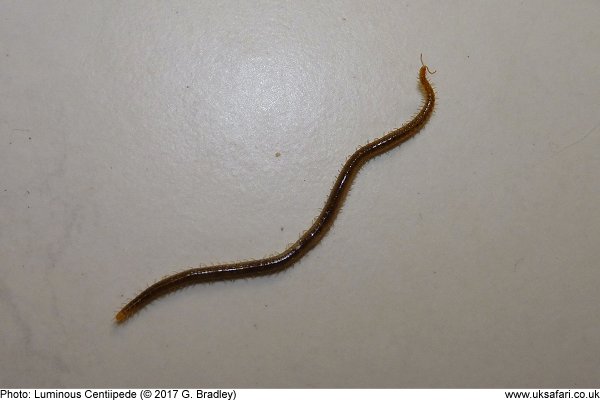 Centipedes
Centipedes
Identify It > Invertebrates Section > Centipedes >

Common Centipedes (Lithobius forficatus), like the one above, grow to around 30mm in length and have 15 pairs of legs. The back two pairs are extra long and are used to feel their way around, as are the long antennae.


They hunt at night, but can often be found hiding under bark or in rotting wood during the daytime.

The Luminous Centipede (Geophilus carpophagus) appears quite dull in colour, but at night it gives off a phosphorescent light, similar to the glow-worm. Unlike the Common Centipede this species does have more than 100 legs.
 Quick Facts
Quick Facts
Scientific name: Chilopoda
Size: From approx 30mm to 80mm depending on the species
Distribution: Found throughout most of the UK
Months seen: All year round
Habitat: Mostly in damp, shaded locations such as leaf litter, under logs, rotting tree stumps and sometimes in soil
Food: Invertebrates such as worms and insect larvae
Special features: Centipedes are elongated, flattened invertebrates with multi-segmented bodies. Each segment of the body has one pair of legs (millipedes have two pairs of legs on each body segment). Compared to millipedes they are also quite fast moving. They are equipped with venemous fangs which they use to catch and kill other invertebrates. The centipedes found in the UK are harmless to humans.
 Related Pages
Related Pages

 Popular Pages
Popular Pages
Amphibians, Bats, Badgers, Beetles, Birds, Birds of Prey, Bumble Bees, Butterflies, Caterpillars, Creepy-Crawlies, Deadly Spiders, Dolphins, Dragonflies, E-Postcards, False Widow Spiders, Free Newsletter, Frogs, Fungi, Garden Spiders, Glow-Worms, Grey Squirrels, Hedgehogs, House Spiders, Ladybirds, Mammals, Marine Mammals, Moths, Owls, Reptiles, Spiders, Toads, Trees, Wildlife Hospitals
Copyright © 2020 G. Bradley UK Safari. All rights reserved | About Us | Links | Contributors




